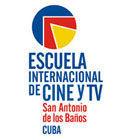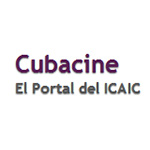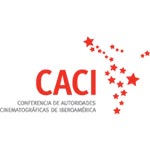Nace en la ciudad de La Paz pero viajó muy joven a los Estados Unidos para estudiar ingeniería mecánica; una vez allá se interesa por la fotografía y comienza a trabajar como asistente de un fotógrafo en Nueva York. Posteriormente estudia fotografía y cine en el City College de la misma ciudad.
A su regreso a Bolivia, en 1967, se une al Grupo Ukamau del cual pasa a ser su director de fotografía y operador de cámaras. Bajo las órdenes de Jorge Sanjinés, Eguino es el diseñador de imágenes en clásicos del cine latinoamericano como Yawar Mallku (1969) y El coraje del pueblo (1971). Principalmente en el primero de estos filmes, se puede apreciar un hábil manejo de la cámara que logra elocuentes planos secuencia en el blanco y negro elegido.
En 1970, filma su primer corto documental titulado Basta, en el cual se aborda la nacionalización de la Gulf Oil Co desde una perspectiva militante. Cuando Sanjinés no puede retornar a Bolivia después del golpe de estado de Hugo Banzer, el grupo Ukamau se divide en dos, en Bolivia quedan Antonio Eguino y Óscar Soria quienes crean la Empresa Ukamau. La nueva empresa tiene que esperar hasta 1974 para estrenar su primer largometraje de ficción, Pueblo chico. El filme narra la historia de un muchacho que retorna a vivir a su país luego de haber estudiado en el exterior y cómo este se empieza a dar cuenta de las injusticias que se cometen en su propia tierra. Con algunas alusiones a la política y un enfoque pesimista esta película se encuentra insertada en lo que se denominó “cine posible”, aplicada a los filmes que se hacían porque solo de ese modo era posible realizarlos, no solo al cine que era necesario hacer sino al que era posible realizar en las difíciles condiciones de censura.
Parte del “cine posible” era también Chuquiago (1977), en la cual entrelaza cuatro historias de habitantes de la capital boliviana quienes a su vez representan distintos estratos sociales. Este filme ha sido el de mayor éxito comercial en la historia del cine boliviano, visto por más de un millón de espectadores en su estreno. Semejante éxito conquistó de parte de la crítica y de los jurados de los festivales internacionales.
Amargo Mar (1984) es su tercer largometraje que, al igual que sus dos trabajos anteriores, cuenta con guión de Óscar Soria. El filme narra los hechos de la pérdida del mar, un tema siempre polémico en Bolivia y que causó un gran revuelo por la forma en que se abordan los hechos históricos.
Después de Amargo mar, se ha dedicado también a la creación de instituciones que contribuyan al desarrollo de la actividad fílmica en Bolivia. Fue importante su papel en la creación y dirección del Conacine, así como de la Asociación de Cineastas. En marzo de 2005 comenzó la filmación de su cuarto largometraje, Los Andes no creen en dios, el cual terminó en 2007.
Filmografía:
2005 Los Andes no creen en Dios
1984 Amargo Mar
1977 Chuquiago
1975 Pueblo Chico
Antonio Eguino (1938-) was born in La Paz, Bolivia, but he traveled to the United States, when he was very young, in order to study mechanical engineering. While living there, he became interested in photography and began to work as an assistant to a photographer in New York City, where he later took photography and film studies at the City College.
He returned to Bolivia in 1967 and joined the Group Ukamau for which he became director of photography and cameraman. Under the guidance of Jorge Sanjinés, Eguino played the role of image designer in classics of the Latin American cinema such as Yawar Mallku (1969) and El coraje del pueblo (1971). It is mainly in the first of these two movies where his expertise with the camera can be appreciated through the outstanding shot sequences in the selected black and white that he presents.
In 1970, he made his first documentary short film Basta, in which he tackles the issue of the nationalization of the Gulf Oil Co from a militant perspective. When he was unable to return to Bolivia after Hugo Banzer´s coup d´etat, the Group Ukamau split in two, Antonio Eguino and Óscar Soria remained in Bolivia and created the Ukamau Enterprise. It is not until 1974 that this enterprise is able to exhibit its first narrative feature film, Pueblo chico. The film narrates the story of a young man who returns to his country after spending time abroad studying, and becomes aware of the injustices committed in his motherland. With some political references and a pessimistic approach, this film classifies as one of the pieces of the so called “cine posible” (possible cinema), applied to films which could not be made in any other way, not only because that type of movie was necessary but also because it was the only approach possible given the difficult situation of censorship.
Chuquiago (1977) was another film of “cine posible” in which four stories of the inhabitants of the Bolivian capital city, who also represent different social strata, are intertwined. This film has been the greatest commercial success in the history of the Bolivian movie industry. It had an audience of more than a million people after its première, release and exhibition. Such success stroke the attention of critics and judges at international film festivals.
Amargo Mar (1984) is his third feature film and just as in his two previous works, the screenplay was written by Óscar Soria. The film narrates the facts associated to the loss of access to the sea, a very controversial issue in Bolivia. The film caused a great commotion due to the way in which historical facts are tackled.
After Amargo mar, he has devoted his efforts to the creation of institutions that contribute to the development of cinema activities in Bolivia. He played an important role in the creation and direction of Conacine, as well as the Association of Filmmakers. In March 2005, he started filming his fourth feature film Los Andes no creen en dios, which he finished in 2007.
Films:
2005 Los Andes no creen en Dios
1984 Amargo mar
1977 Chuquiago
1975 Pueblo chico
References in the multimedia:
Chuquiago, 1977, Direction
Amargo mar, 1984, Direction
Los Andes no creen en Dios, 2007, Direction
 “Nuestro objetivo final es nada menos que lograr la integración del cine latinoamericano.
Así de simple, y así de desmesurado”.
“Nuestro objetivo final es nada menos que lograr la integración del cine latinoamericano.
Así de simple, y así de desmesurado”.













